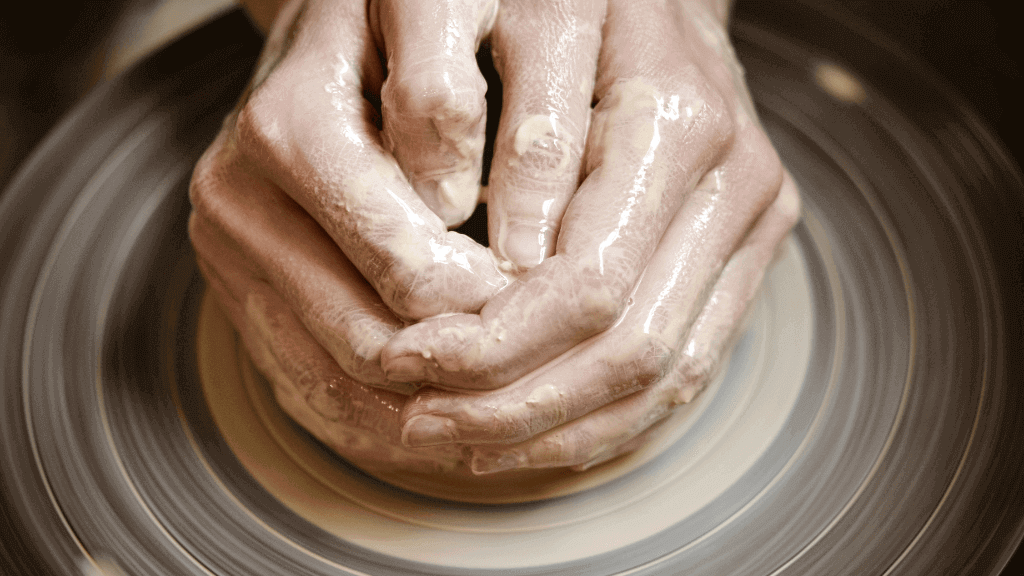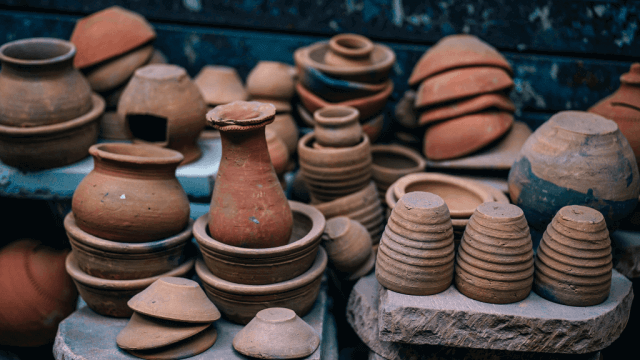Cracks in pottery are mainly caused by uneven drying of the piece, meaning that some parts shrink more than others. This can be prevented by creating a consistent environment for drying the piece and ensuring that the entire piece dries at a similar rate. Stress on the clay can also cause cracks to form when parts of the pottery dry out faster than other parts.
What are the most common reasons for pottery to crack?
Uneven drying is the most common cause of cracks in pottery. Clay shrinks when it dries, and if one component of the pottery dries faster than another, it can create stress that leads to cracking. Other causes include uneven thickness in walls , inconsistent firing , and rapid temperature changes during firing.
Can you provide tips or techniques for preventing pottery from cracking during the drying or firing process?
To prevent pottery from cracking during the drying or firing process, it is important to dry the pottery slowly and evenly. Covering the pot with plastic and wrapping handles and rims can help equalize drying. Additionally, rotating and turning the pottery over can help prevent a cracked area from forming. To avoid uneven firing, it is important to control the heat, length, and drying capacity of your kiln. Optimizing body recipes, ware cross sections, and drying processes can also help speed up the drying process without causing cracks.
Are there any specific types of clay or glazes that are more prone to cracking than others?
Clay and glazes that contain high amounts of clay are more prone to cracking due to the high shrinkage rate of drying clay. Glazes that are not able to expand and contract with the clay can also cause cracking, known as crazing. Stress between the clay and glaze can also cause pieces to crack off. Crazing is a web of tiny cracks on the surface of pottery caused by an imbalance between the glaze and clay.
How can I repair cracked pottery, and is it possible to prevent it from cracking again in the future?
Cracked pottery can be repaired by mixing paper clay from the same clay body, adding a few drops of clear glaze and some finely grounded bisque, and filling in the chip with more paper clay. To prevent pottery from cracking again in the future, it is important to keep the clay at an even thickness, make it thinner overall, cover it to protect from drying too quickly, and control the heat, length and drying capacity of the kiln. Additionally, placing broken ceramic pieces on sand with the cracked side facing up can help with repairs.
What are the signs that my pottery is at risk of cracking, and how can I adjust my techniques or approach to avoid this issue?
Signs that pottery is at risk of cracking include larger pieces drying quicker than the deep layers , S cracks appearing during drying or firing , unequal shrinkage of the clay in the base and walls of a pot , hard spots in the clay , and low humidity levels in the studio or plant. To avoid this issue, one should use consistent moisture levels in their clay, center their pieces properly, and maintain a humid environment.











